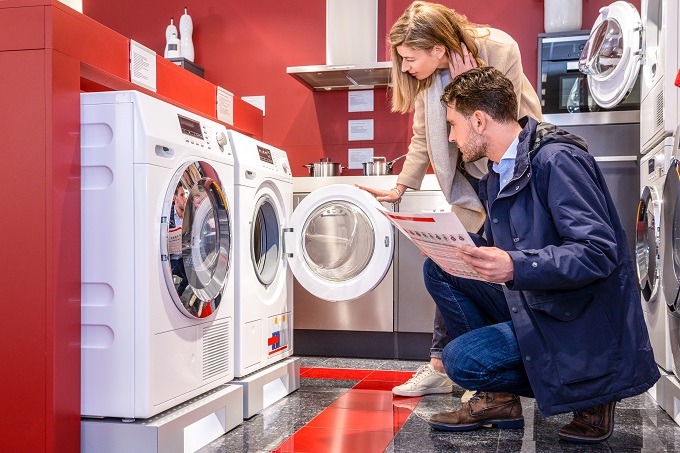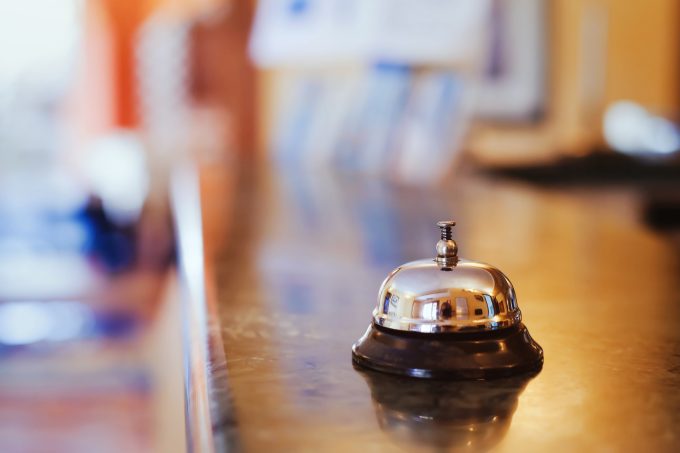
Clean & ‘simple’ in-house laundry refurbishment
If I mentioned sleek finishes, smooth operation and stress-free payment options, you could be forgiven for thinking this was an article on reception desks or even good hotel web design.
In-house laundries probably wouldn’t spring to mind; after all, many hotel laundries are far from sleek, smooth-running and stress-free.
In-house laundries are an important aspect of operation for many accommodation providers across the country, with guests relying on laundry services for long stays and business trips – but it’s not only guests that benefit from the facilities. Hotels have reported savings of up to 47 percent on outsourced laundry expenses, and preach of prolonged linen life and rapid return on investment.
While an in-house laundry installation or refurbishment may sound like a simple mission, it’s not all suds and bubbles.
Industry viewpoint
Speed Queen’s sales director Duncan Gardener shared his insight on what it takes to design, kit-out, and operate a fully functional hotel laundry.
Planning and design
Just as it’s important to consider the layout of a guest room or dining space, the design and planning of an in-house laundry is critical to its functionality.
“Efficient throughput is a huge success factor for on-premises laundries. A logical layout is fundamental,” Mr Gardiner said.
Safety and ergonomics are both key factors in a clean laundry layout, allowing guests and staff to access equipment and move with ease. Simple considerations such as bench space will reduce the risk of items becoming trip or traffic hazards on the floor, while selecting the right finishes will counter tough cleaning. Ensuring that proper ventilation requirements are met is also a must.
Consider materials such as granite or stainless steel for benches, or a simple glass backsplash behind sinks to avoid hard-to-clean grout. Importantly, remember that ‘cheap’ isn’t always cheaper when it comes to fit-out.
“Spending a bit more time and money now saves so much time and money over the life of a laundry!” he shared.
Replacing equipment
Laundry machinery is a long-term investment – that is, if you get it right. In order to get it right on the first try, Mr Gardiner advises working with a reputable supplier who can offer reliability, efficiency and serviceability.
“You want your equipment to never break down, run on the smell of an oily rag whilst performing like a Ferrari, but be easy to service. Importantly, you need to be dealing with someone who has the expertise to make sure you buy the right configuration for your requirements,” he said.
In theory, the correct equipment should last from anywhere between 15 and 20 years if used correctly. According to Mr Gardiner, some customers he speaks to are still running strong on 25-year-old machines.
When it comes to selecting a machine, residential-grade equipment simply doesn’t perform at a commercial level. While at-home machines can operate effectively with features such as direct drive, accommodation providers would do well to consider the volume of laundry at hand and the subsequent stress put on the machinery.
“Commercial equipment needs to be heavy-duty to withstand the rigours of daily life,” Mr Gardiner said. “Our view is that direct drive is not robust enough for commercial environments.”
In order to ensure that robust equipment does in fact go the distance, there’s nothing more important than choosing a supplier with servicing agreements and a long warranty period.
With so many commercial equipment options on the market, a decision can be overwhelming – Mr Gardiner encourages hoteliers to take a breath.
“Buying the right brand is only the starting point – laundries are once-in-10 to -20 year projects, which is a long time to live with a mistake.”
Payment technology
With the right investment meaning a machine could last years or even decades, thinking about the future of payment technology is more important than ever.
Where guests were once forced to count their gold coins or cash in for a few dollars at the front desk, it’s becoming increasingly common for guests to have the choice of cashless payment. For Mr Gardiner, this is a clear step in the right direction.
“Cashless payment is in huge demand, and for good reason. It eliminates cash management, theft and coin jams, and gives customers a much better experience.”
Coins jams are notorious causes for faulty commercial machinery, creating unnecessary servicing and downtime. Furthermore, they limit a guest to pricing increments, causing wastage and frustration.
“Debit or credit are by far the best solutions – everyone has a debit or credit card.”
Reiterating the most important considerations a hotelier can have when it comes to an in-house laundry, Mr Gardiner concluded: “Make sure you have the right product, correct payment solution, efficient layout, and service infrastructure in place. These are all key to a successful and efficient laundry.”
Laundries don’t have to be an artistic statement, but investing in state-of-the-art equipment, effective layouts and efficient payment systems will certainly aid hotels in cleaning up their act.
Lauren Butler is a junior journalist here at accomnews. You can reach her at any time with news, opinions and submissions.






